Last week Sroyon Mukherjee started his excellent series of darkroom articles, and inspired me to get back into the red light. He made a very good point right from the beginning: if you want acceptable prints, the only way is Testing! Testing! Testing
Test strips for time, others for contrast. Should the need arise even localized testing, the same part of the image with different time and/or contrast. Sroyon is right. I was lazy after 20 years digital editing and somehow expected effortless great prints, just because I shot, developed and printed every day. The darkroom has no sliders or presets, and I had to get used to slowing down my workflow a lot. So time to get out and take pictures.
The beginning of Corona, the emergence of masks and emptying of public space I shot with a Nikon D780. For analog I had another idea. While I had a couple of frames left in the M6 on a film started last summer in Paris, shooting empty Berlin was a job for a special lens, boxed away for far too long. Way back, in 2004, I shot a Nikon D70 with its cropped 6.1 megapixel sensor. To achieve the look of a 24mm, I got myself a used Nikkor 15mm ƒ3,5. This ultra-wide lens gives you a whopping Panoramic 110° on a full frame camera, with it‘s huge, protruding frontal element a dead ringer of HALs red eye. (Stanley Kubrick actually used an even wider 8mm ƒ8 Nikon lens as a prop while shooting 2001).
When full frame bodies became available my lens lineup was full AF, the manual Nikkors went into storage. Since I picked up shooting film last year I thought of using the 15mm on a manual body for the first time. I slapped it on the FM2 and went into the empty city in springtime.
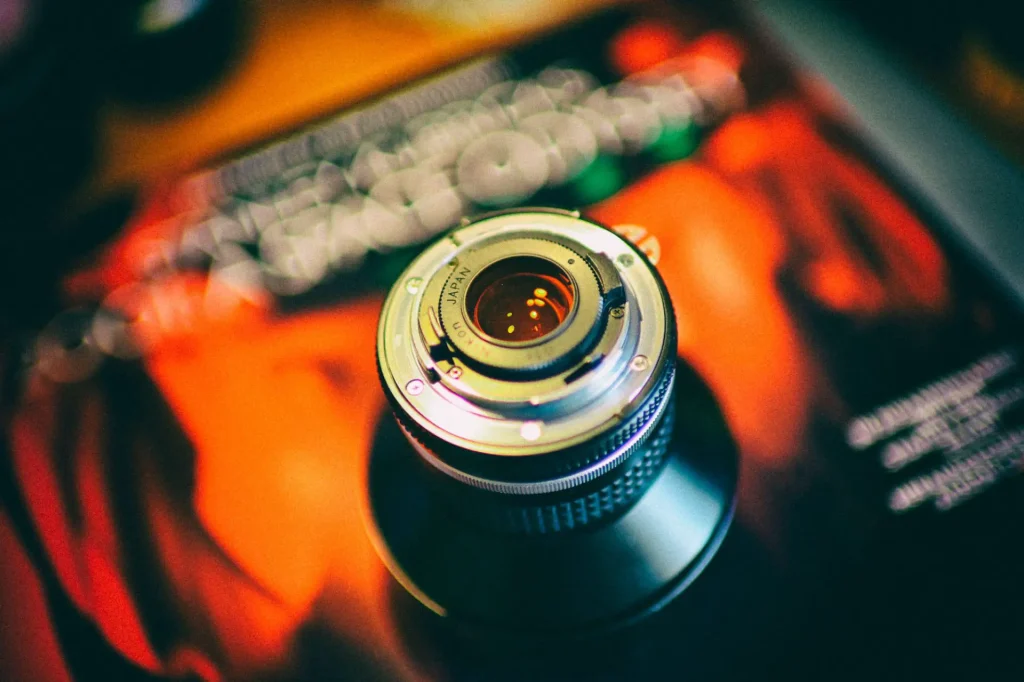
The Blue skies of Berlin had to be darkened with an orange filter! The bulging front of the 15mm makes it necessary to insert filters via a pretty cool bayonet system at the back of the lens, as with the Fisheye 16mm ƒ2.8 AF.
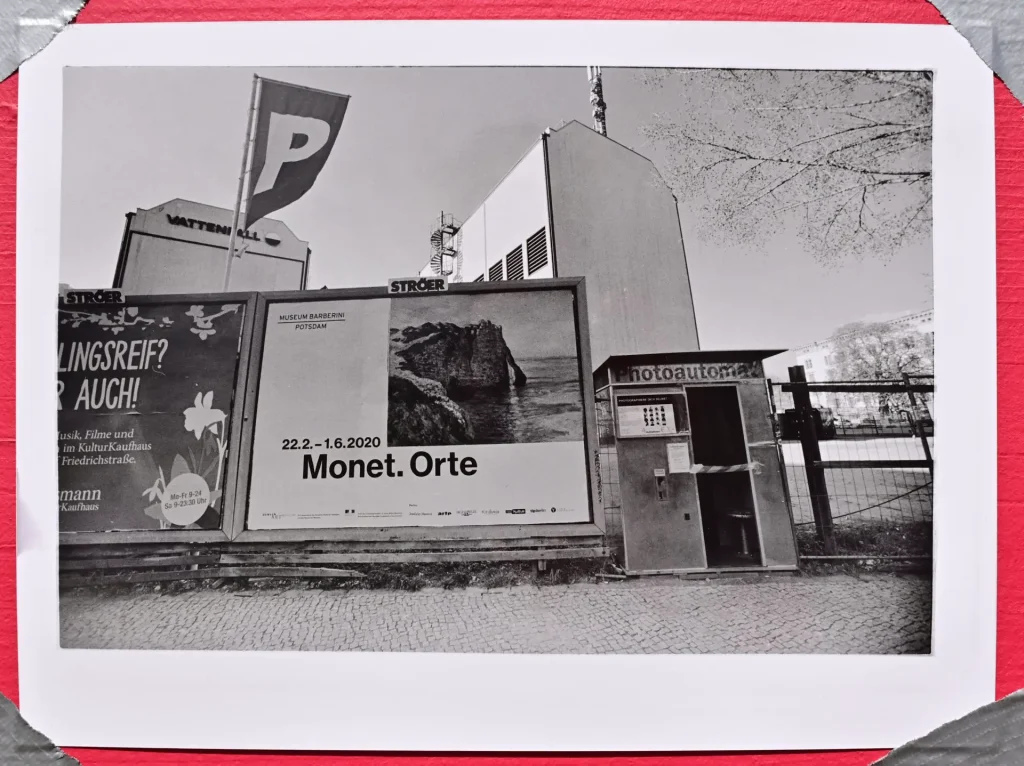
Even the Photoautomats, a staple with tourists about town, are verboten. The poster next to it advertises Places, an exhibition of Claude Monet at the Museum Barberini in Potsdam. The painting of Porte d’Aval in Étretat, France, mirrors the quiet emptiness of Niederkirchnerstraße.
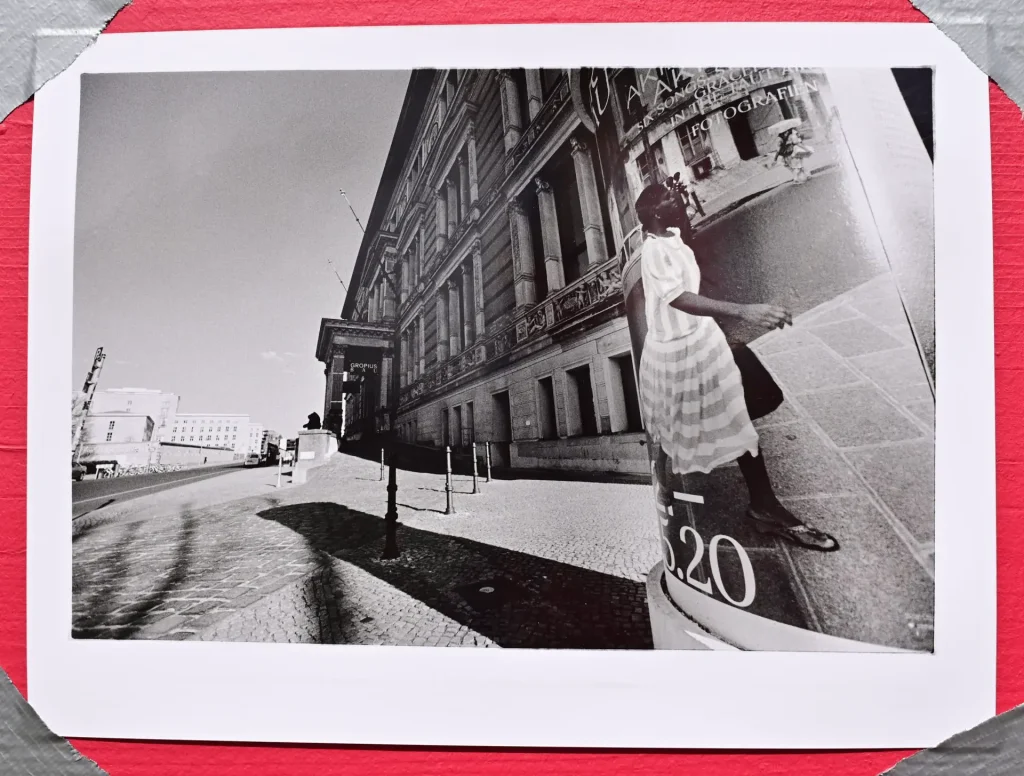
The woman walking out of the frame is not really there, merely she is a part of a photograph of Akinbode Akinbiyi, shown at the Gropiusbau in the background just now.
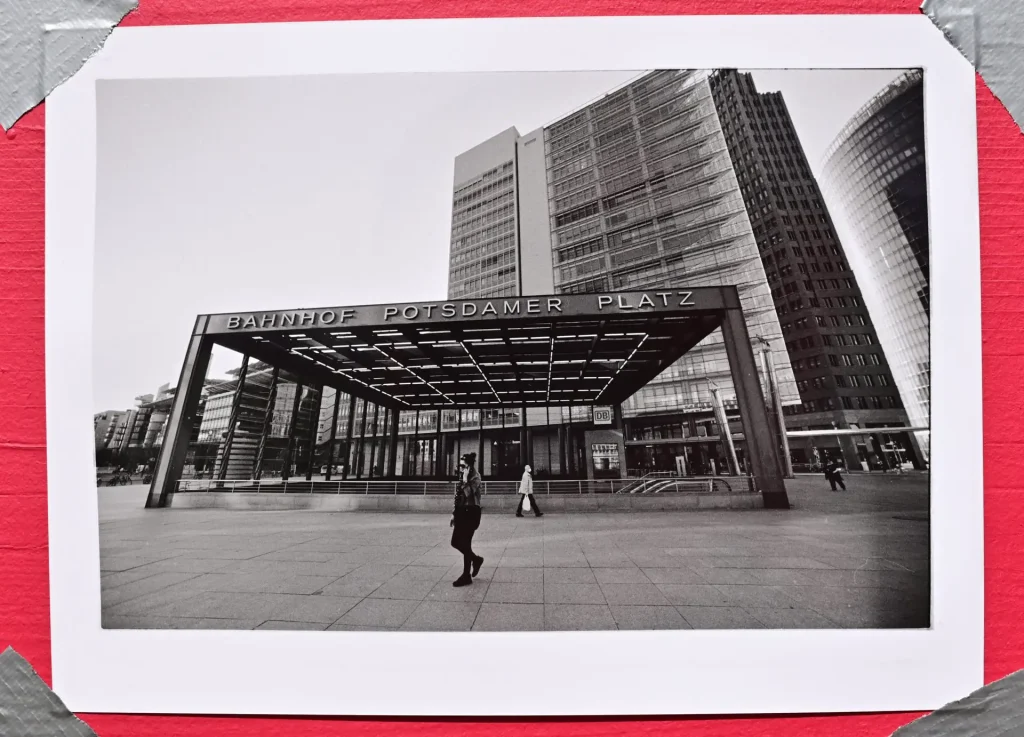
Had to get the train / from Potsdamer Platz / you never knew that / that I could do that / just walking the dead…
David Bowie, Where Are We Now?
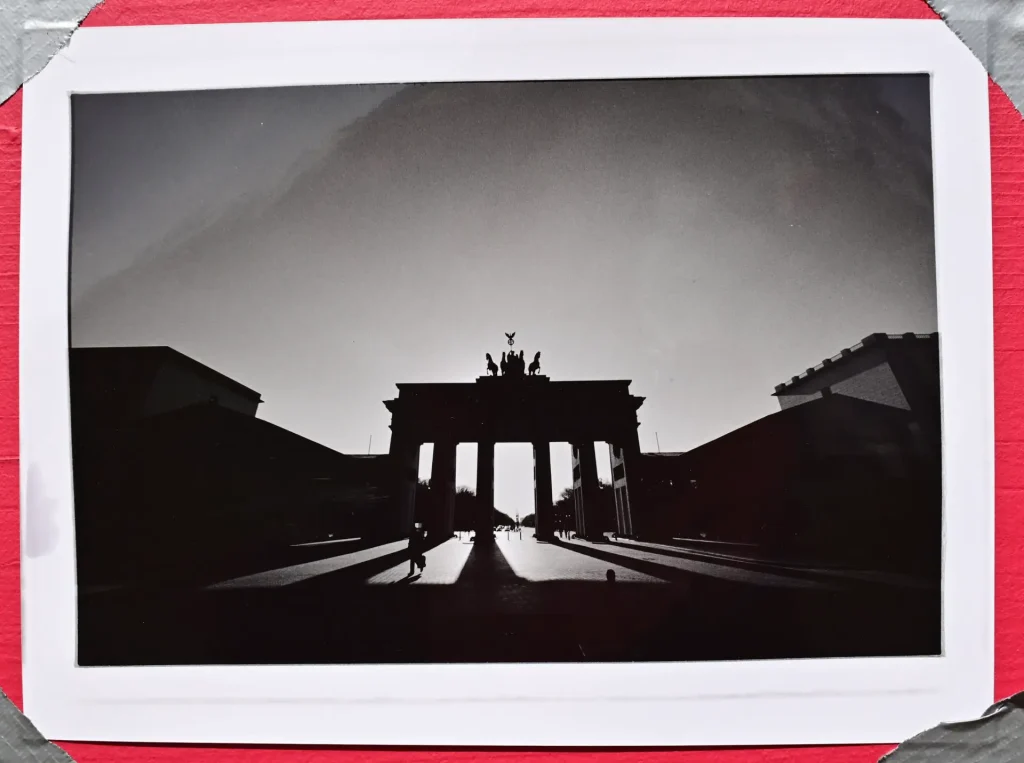
The Brandenburg gate at sunset. I was quite happy with the sky-darkening filter at this point, after you get used to the strong orange tint in the finder. This is what it looks like in the FM2:
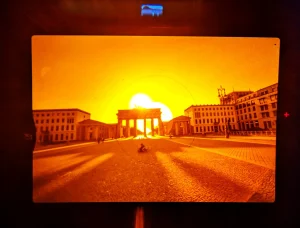
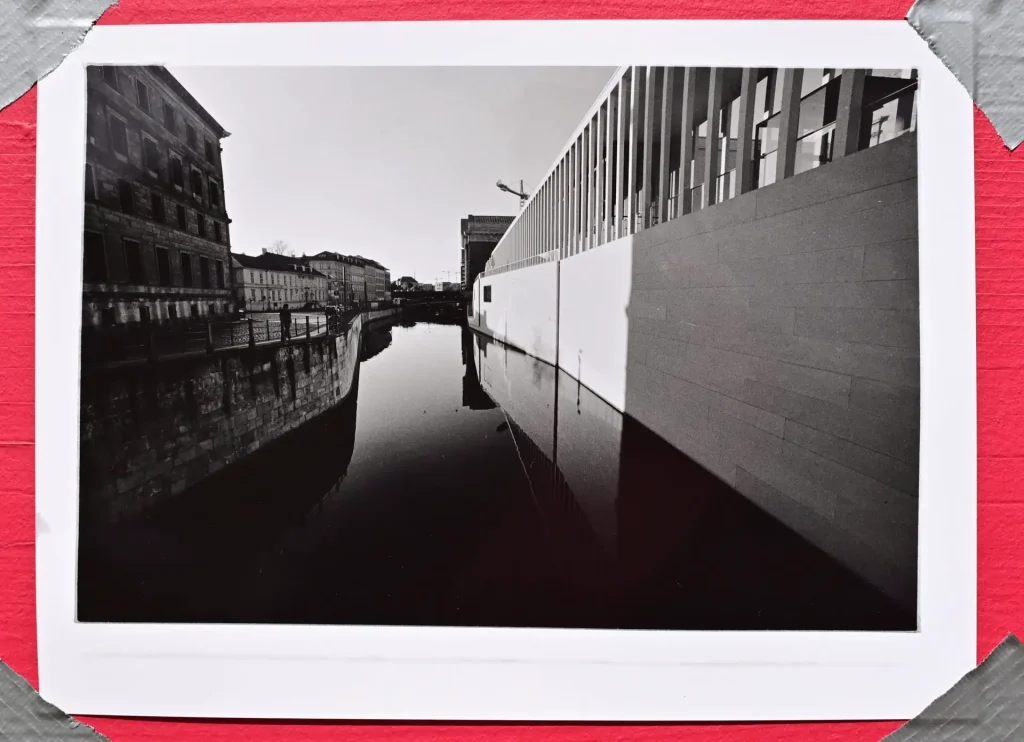
A small island full of Art in the heart of Berlin. View from the Neues Museum down Kupfergraben, a sidearm of the river Spree. Angela Merkel lives in one of the buildings on the left.
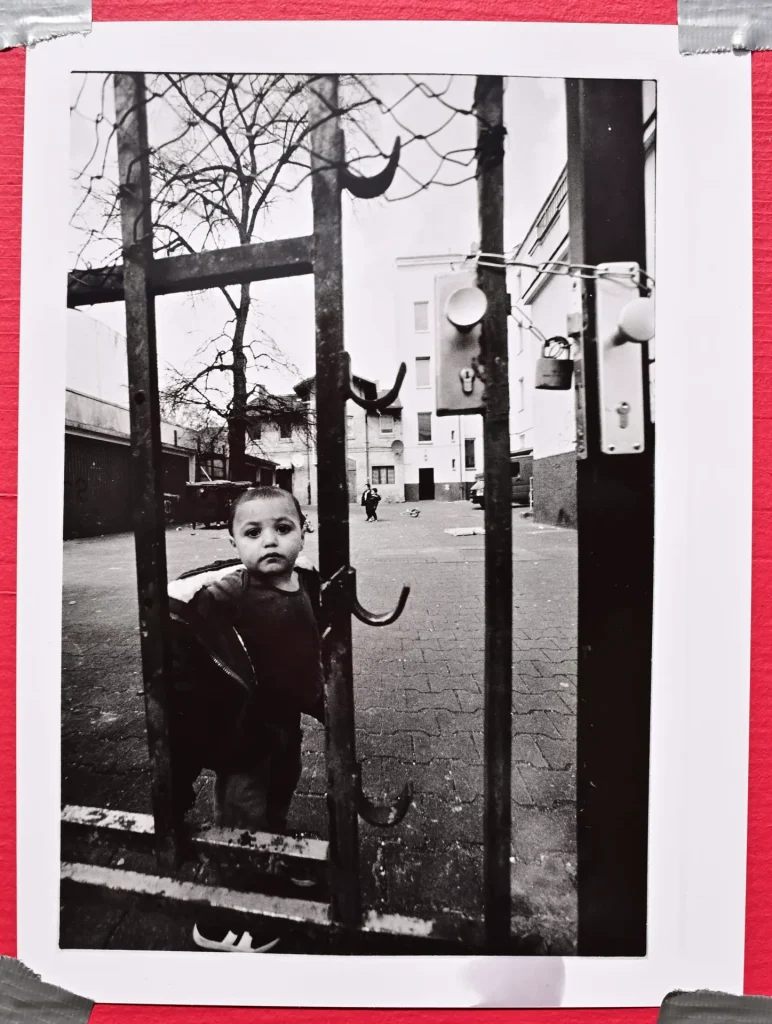
Okay, I cheated. This is Frame number six. It was the last image on the film. What will this boy remember about the strange spring 2020, when everything changed in a matter of days.
The Tri-X was developed in HC-110 B, 7 Minutes at 20°C. Printed on Ilfospeed Multigrade RC IV. Grade 2 and 3. I tested every image before printing, did some dodging, and this level of control gave me the fun in the darkroom back. To show the real prints I went outside to the Tempelhof Airfield today and taped them to a wall. My next analog story will be about developing 16×20 inch sheets of Ilfospeed in a Jobo Drum. Well tested, of course!
Thank you for your time!
I hope you are safe, healthy, and happy with your favorite books or TV shows, pets and family members on the couch!
Share this post:
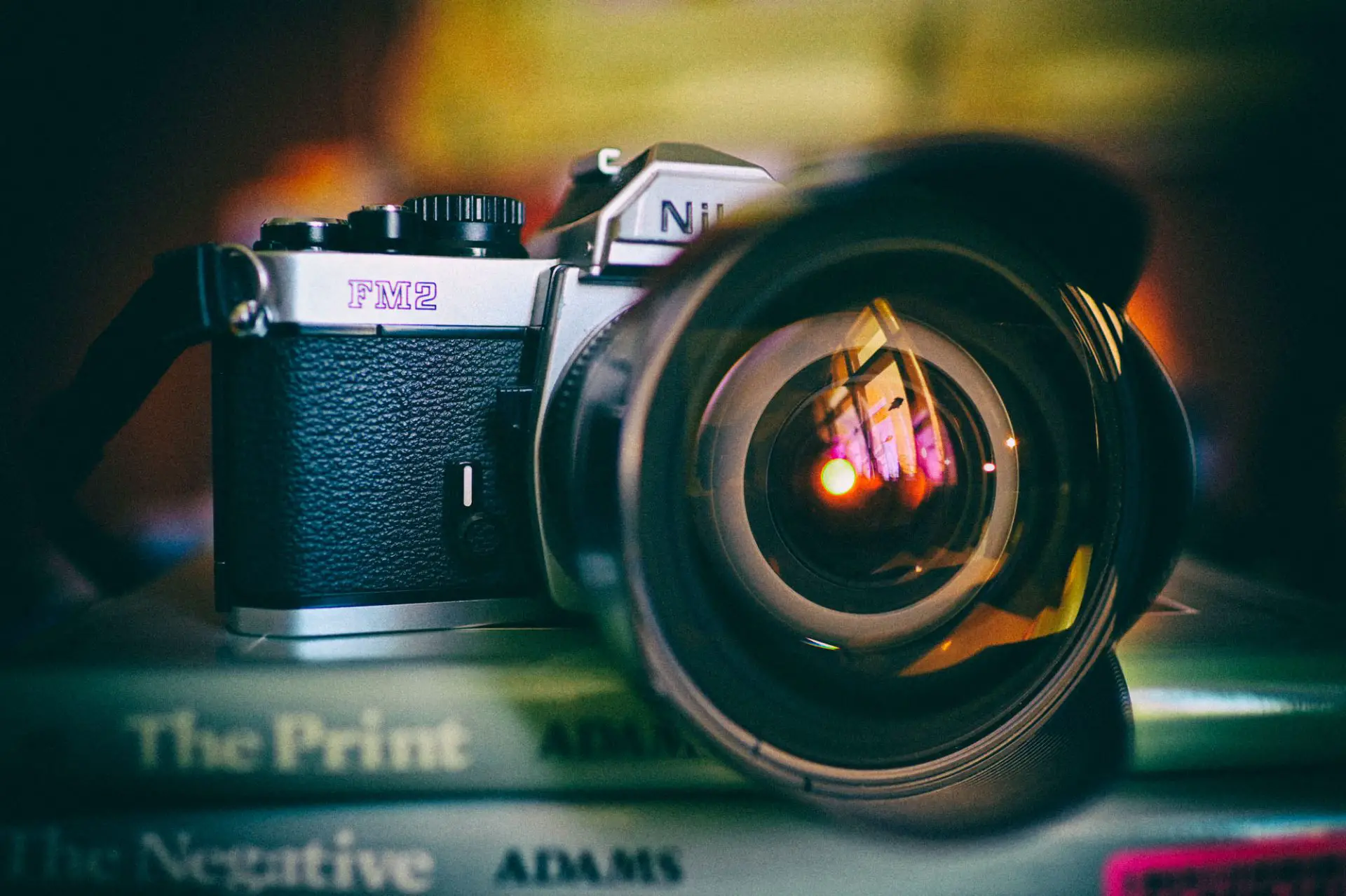








Comments
Gandhi Cabanas on 5 Frames of Berlin in springtime (with a Nikkor 15mm and FM2) – By Thorsten Wulff
Comment posted: 20/05/2020
Comment posted: 20/05/2020
Bernd Runde on 5 Frames of Berlin in springtime (with a Nikkor 15mm and FM2) – By Thorsten Wulff
Comment posted: 20/05/2020
Comment posted: 20/05/2020
Rock on 5 Frames of Berlin in springtime (with a Nikkor 15mm and FM2) – By Thorsten Wulff
Comment posted: 20/05/2020
Comment posted: 20/05/2020
eric on 5 Frames of Berlin in springtime (with a Nikkor 15mm and FM2) – By Thorsten Wulff
Comment posted: 20/05/2020
Thanks so much for sharing. Give me ideas to use my voigt 15 mm with my M3 or Nikkor Ais 20mm/2'8 with my FM3a. But, I am not sure to arrive to this high level. Just for fun. Love these pics. I cam to Berlin when I was studying en Geneva at the time they was breaking the wall. Now city breaths, ... hope some will continue to enjoy this free breath. ;-)
Comment posted: 20/05/2020
Sroyon on 5 Frames of Berlin in springtime (with a Nikkor 15mm and FM2) – By Thorsten Wulff
Comment posted: 21/05/2020
My widest lens is a Zeiss Flektogon 20mm f4, but I'd like to try something even wider. The problem of course is that good rectilinear full-frame ultra-wides are expensive! I've been thinking about getting a Sigma 10-20mm for my crop sensor Nikon DSLR, maybe that will scratch the itch... for the time being haha.
Ed on 5 Frames of Berlin in springtime (with a Nikkor 15mm and FM2) – By Thorsten Wulff
Comment posted: 22/05/2020
I also hate looking at the world in dark yellow, orange or red when shooting B&W film on an SLR.
That's why I bought an M6.
Comment posted: 22/05/2020